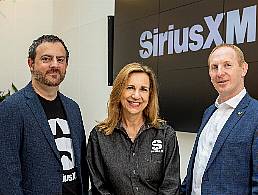There are various ways to catch the eye and impress a recruiter. But, when it comes to CVs, does creativity actually pay off?
We recently looked at some of the more entertaining ways to present CVs to companies, with interactive video game themes, infographics and even QR codes just some of the approaches people have taken towards job applications.
But, other than the slim chance that an entertaining CV goes viral, do they actually have an effect on employers? Yes and no, according to James Milligan, director at Hays IT.
Effective, to a point
“They can prove very effective, but there’s a problem,” said Milligan. “Many larger companies have software for job applications.”
This means that your wonderfully crafted infographic, while appearing clever and fantastic, could get lost in the system.
“The software could be keyword-driven, meaning if you don’t have the right words included then your CV won’t flag up,” said Milligan. “So if you’re going down the creative CV route, by all means make it as eye-catching as possible. But add a .docx version, just in case.”
A few years back, research from Ladders estimated that recruiters spend less than seven seconds looking at a CV before making a decision on the applicant. That decision won’t be ‘hire this person!’, but it could determine whether or not you’re of interest.
Know your stuff
“We are used to looking at CVs,” said Milligan. “We know what we’re looking for. The personal stuff – ‘I can work independently, but I’m also comfortable working as part of a team’ – that’s just useless. Everybody has it, it means nothing. We look for your current job and your skills.”
It’s that easy, it seems. Though there are points to remember.
The ‘keyword’ idea is solid, with Milligan adamant that CVs should always be adapted, producing a different one for every role applied for.
As a front-facing piece of personal marketing, your CV is your introduction to an employer. If they have listed a job spec of desired skills, construct your CV accordingly.
“Often, when you send a CV in, it’s not the person hiring that reads it first. It might be HR people, so the information could be lost on them.
“My main recommendation would be to really read the job spec and what they want. These are the keywords they look for. These are the keywords you need.”
There’s no need for a full education history, right down to your early school days. Nor is there need for a complete jobs history dating back to your teenage years. Relevance is key.
Different strokes
Of course, job applications differ industry to industry. While management, marketing and PR positions may benefit from the likes of LinkedIn profiles, IT positions – according to Milligan – certainly don’t.
![]()
“LinkedIn isn’t perfect. Actually, it gets some things wrong. Take IT, for example, where we have a big skills gap.
“If someone who was an expert in, say, Python, and they put their full skill set into LinkedIn, they would get hassled by recruiters non-stop. There’s no limit to how many times they can get approached. So we see those types of people either limit their input into LinkedIn or walk away entirely due to this. Alternatives like Github, or Stack Overflow, they are better suited for these professionals.”
Across all areas, though, Milligan is consistent: read the brief, keep it relevant, play the game.
Looking for jobs in tech or science? Check out our Employer Profiles for information on companies hiring right now.
Chalkboard and coding images via Shutterstock




